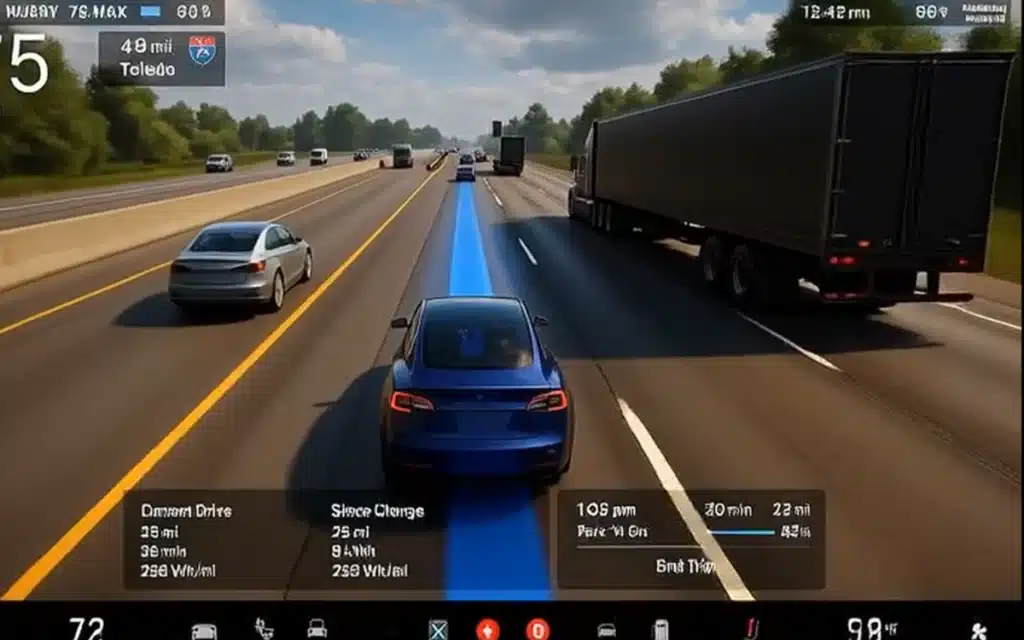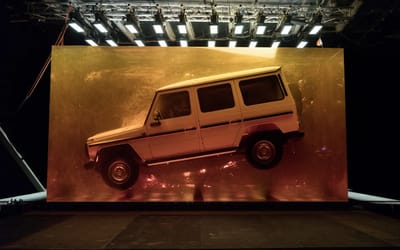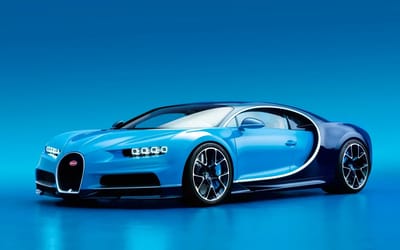Tesla is planning to use Unreal Engine for major upgrade to driver visualization
Published on Aug 15, 2025 at 10:58 AM (UTC+4)
by Jason Fan
Last updated on Aug 15, 2025 at 12:39 PM (UTC+4)
Edited by
Emma Matthews
Tesla is reportedly preparing to integrate Unreal Engine into its driver visualization system, marking a major leap in how its vehicles depict surroundings.
The move could bring a dramatic jump in realism, fluidity, and detail compared to the current Autopilot interface.
Driver visualization appears on the center screen and offers a live 3D rendering of the car’s environment, including other vehicles, pedestrians, and obstacles.
With Unreal Engine’s advanced graphics capabilities, cars could deliver a more immersive and intuitive experience for both Autopilot and manual driving.
VISIT SBX CARS – View live supercar auctions powered by Supercar Blondie
Unreal Engine is also used in Fortnite
Currently, the EV’s visualization software is based on the open-source Godot engine.
However, hints of change surfaced in firmware version 2025.20, uncovered by well-known hacker ‘greentheonly’.
This is the same software update that teased a bunch of exciting new features and a whole new Model Y.
The code suggests the maker is building an entirely new visualization framework using Epic Games’ Unreal Engine.
If you’ve no idea what that is, just know that the Unreal Engine is best known for powering popular video games like Fortnite.
In fact, this isn’t the first time the maker has been associated with Fortnite, given that the Cybertruck made its debut last year in the game.
First released in 1998, Unreal Engine has evolved into a versatile 3D graphics platform used across industries, from gaming to virtual production in Hollywood.
The upcoming Unreal Engine 6 is already in development, though the brand’s upgrade would likely rely on the cutting-edge Unreal Engine 5.

The brand’s current driver visualization is already considered one of the most advanced in the automotive industry, showing lane markings, traffic lights, road signs, and even the shapes of motorcycles, trucks, and pets.
It updates in real time to reflect what the car’s cameras and sensors detect, helping drivers better understand their surroundings.
This is particularly useful in complex situations like merging or navigating through traffic.
However, the graphical style remains minimalistic, prioritizing function over visual fidelity.
Improved graphics can help prevent accidents
With Unreal Engine, the EV maker could produce smoother animations, richer lighting effects, and more accurate spatial rendering, giving drivers a simulation-like perspective of the real world.
Beyond visual appeal, improved graphics could enhance safety by making hazard recognition faster and more intuitive.
Realistic lighting and object modeling can help drivers spot pedestrians or vehicles obscured by low visibility conditions, which helps to prevent accidents.
Meanwhile, fluid animation could make motion tracking, such as following a car merging into your lane, easier to interpret at a glance.
Although the brand has not officially confirmed a release timeline, any such overhaul would likely roll out via an over-the-air software update, as with past visualization improvements.
If implemented, this would mark one of the biggest changes to the user interface since the launch of Full Self-Driving visualization previews.
Of course, Tesla’s Grok AI is due to go live with the next update, so it remains to be seen which of the two will be the biggest game-changer in 2025.
DISCOVER SBX CARS: The global premium car auction platform powered by Supercar Blondie
Jason Fan is an experienced content creator who graduated from Nanyang Technological University in Singapore with a degree in communications. He then relocated to Australia during a millennial mid-life crisis. A fan of luxury travel and high-performance machines, he politely thanks chatbots just in case the AI apocalypse ever arrives. Jason covers a wide variety of topics, with a special focus on technology, planes and luxury.




